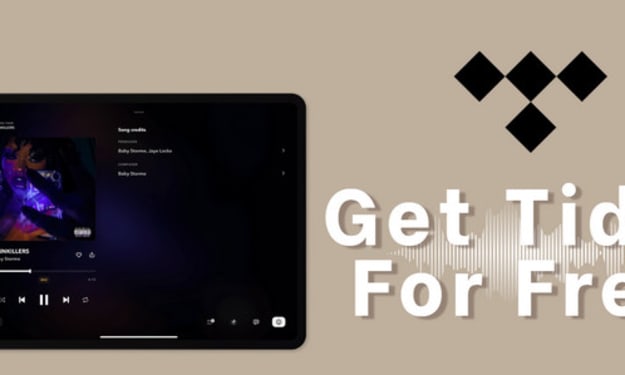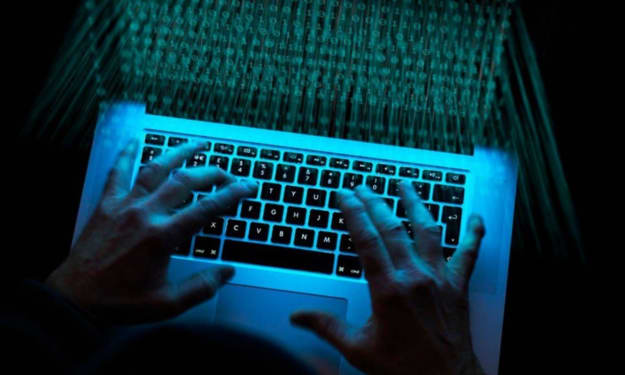5 Of The Most Expensive NFTs Ever Sold
and the $532 million scam

The fact that you’re reading this essay tells me that you’re interested in NFTs and are fully aware that since 2021, NFT artwork has sold for millions of dollars.
No doubt, you’re familiar with the artist Beeple who sold his NFT “Everydays - The First 5000 Days” for $69 million at Christie's.
Before you leap headfirst into minting your first NFT in the hope of earning millions, here’s a rundown of the top 5 most expensive NFTs ever sold at auction.
“The Merge” by Pak for $91.8 million “Everydays - The First 5000 Days” by Beeple for $69.3 million “Clock” by Pak & Julian Assange for $52.7 million “Human One” by Beeple for $28.9 million “CryptoPunk #5822” by Matt Hall & John Watkinson (Larva Labs) for $23 million
It’s worth noting that NFT auctions have not escaped controversy. In October 2021 CryptoPunk #9998 was purchased for $532 million.
However, this record-breaking purchase failed to make the top 5 because the sale was subsequently canceled.
The reason why CryptoPunk #9998 did not become the most expensive NFT in the world was simple. During the blockchain transaction, the buyer took out a flash loan for the same amount.
However, as both the NFT purchase and the flash loan were submitted within the same blockchain transaction, the sale of CryptoPunk #9998 was canceled.
As a result, this CryptoPunk became synonymous with an attempt by a scammer to wash their ill-gotten gains.

Controversy has also dogged celebrities who have come under fire for minting NFT projects as a money-grab. Case in point, legendary skateboarder Tony Hawk was heavily criticized by his fans for his NFT offering, “Last Trick”.
Unfortunately, for Hawk, unlike the title of his NFT, his misstep failed to "Trick" his fans into supporting the project.
What The Hell Is An NFT?
An NFT is a non-fungible token. In short, when an item is non-fungible it means it cannot be exchanged like-for-like, because it’s a unique asset.
NFT’s hold a unique address on the Ethereum blockchain and can take the form of any digital asset.
In practice, examples of NFTs include a JPEG, an audio file, a video clip, or a snippet of code.
To understand the uniqueness of non-fungible assets, imagine two homeowners Mr. Jones, and Mrs. Wilson. Jones and Wilson are next-door neighbors, and as their homes were built by the same property developer, their homes are near identical.
Home A belongs to Mr. Jones and Home B belongs to Mrs. Wilson.
If you can wrap your head around the idea that even though Mr. Jones and Mrs. Wilson’s homes have the same number of bedrooms, the same square footage, and from the outside look identical; I’m sure you’ll agree, that in spite of the similarities, both homes remain unique.
The uniqueness of their homes is based on the fact that Mr. Jones holds the property deeds to his house that identify him as the owner, while Mrs. Wilson holds the property deeds to her house.
Therefore, Mr. Jones cannot claim ownership of Mrs. Wilson’s house and vice-versa.

I use the home analogy to demonstrate the ownership of an NFT because this is a common argument that arises when people question why an NFT JPEG might be worth millions of dollars when you can simply take a screenshot of that same JPEG and own it.
What defines an NFT as an asset is its store of value. As an example, if you were to create a replica of the Mona Lisa down to the last brush stroke - your replica would not hold the same store of value as the real Mona Lisa displayed in the Louvre.
Hence, the value of an NFT - like artwork - is purely subjective, and is priced based upon the sentiment of the collector.
Therefore, I’m certain you can imagine, how an art collector would be willing to pay millions of dollars to own a Picasso.
The art collector does not invest based on the price of the canvas the Picasso was painted on, but more because of their sentiment towards the heritage of the artist, the prestige that comes with owning a Picasso, and how this particular portrait makes them feel.
In truth, value is based on perception and how it makes you feel. The more you feel, the more expensive that item is perceived.
This is why a Himalaya Hermes Birkin sells north of $150,000 at auction. Whereas other hand-stitched bags created by a lesser-known design house are valued less.
The value is not based solely on the craftsmanship or materials, but on the prestige, the heritage, and the sentiment an enthusiast feels when they own a Himalaya Birkin.

Circling back to my earlier point about an NFT’s unique address on the blockchain, imagine this address in the same way you would, with the Property Deeds to your home.
On your home’s Property Deeds are a number of unique markers - such as a Property Id, the address of the property, and the co-signatures between the buyer and seller.
For NFTs, the proof of ownership follows a similar logic. However, rather than your signature being explicitly published on the blockchain, a private key (acting as your encrypted signature) proves ownership of the blockchain address.
Speak Of The Devil, What's A Blockchain Address?
The blockchain address serves as a “pointer” to the location of the digital file when it was minted. It’s worth noting that the actual physical location of the file does not reside on the blockchain itself, because that's too expensive, instead it resides elsewhere on the internet.
While this essay is not a cautionary tale, I do advise you to do your research before heading forth to buy an NFT.
Remember how I mentioned that the physical location of the digital file resides on the internet?
What if the artist decides to offline the website where the file is hosted?

How To Store And Secure Your NFT
When you choose to buy an NFT, it’s important to note that the security of the file is paramount. Always ensure that the artist stores the file in a secure, pre-agreed location that is accessible and controlled by you.
At the time of writing, options available include IPFS hosting. On a side note, the IPFS (which stands for Interplanetary File System) is a decentralized storage solution.
For now, bear in mind, that whenever you purchase an NFT, it’s your responsibility to secure possession of the actual digital file as part of the deal.
To conclude, NFTs have the potential to go mainstream, as the average Joe shouldn’t need to understand how to mint one, nor should they need to understand the intricacies of securing its location.

What I feel is halting mainstream adoption right now, stems from the present lack of abstraction.
In my opinion, while NFTs are in their infancy, within the next 5 years, they’ll be used to store everyday, digital assets that are more relatable to the public.
It’s only a matter of time.
Author: Ella Graysun
About the Creator
Eleanor Graysun
Former technical writer. Now reigniting my love affair with creative writing.






Comments
There are no comments for this story
Be the first to respond and start the conversation.